This installation has been deployed as every year in the Petit parc (“small park”) which faces the Versailles Castle. This park is small only by its name, since it covers an area of more than 50 hectares with its different themed groves.
This set of groves and ponds extends from the Castle to the Apollo Basin. Open since June 6th during the day, The Musical Fountains are supplemented by the Night Fountains since June 27th.

Let’s turn it over to Benoit Soutenet, Dushow’s business manager and fine expert of this technical file.
Benoit Soutenet : Benoit Soutenet: We have been working for CVS (Château de Versailles Spectacles) for this recurring event for 7 years, and others have done it before us indeed, as this Fountains Show dates from 1666

There is therefore directly on site a team of fountain specialists, with their huge know-how, for all that relates to water because there is a lot of maintenance to keep running; almost without electric pumps, all the bodies of water work only with rainwater drained throughout the park and stored in the Grand Bassin and in huge tanks buried here and there or positioned on the roof of buildings surrounding the Castle itself.
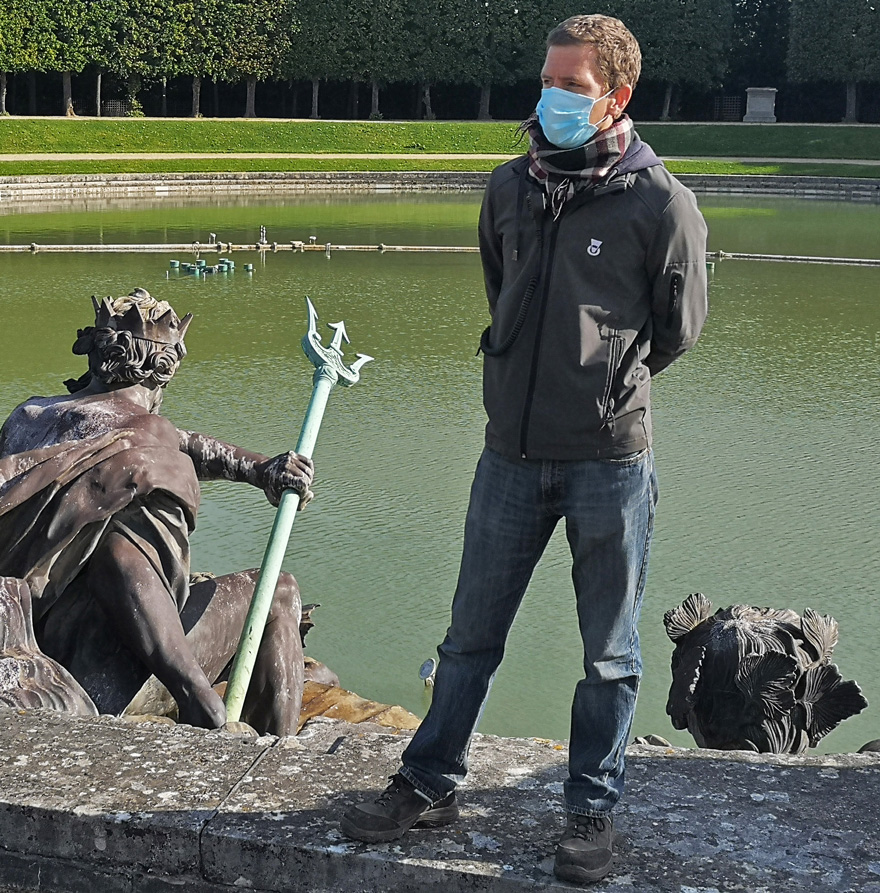
SLU : How do you know this whole case so well?…
Benoit Soutenet : When I started with Versailles, Dushow was still called Dispatch, in 2000!
SLU : What’s your job here exactly then?
Benoit Soutenet : We install the rather complex sound system that allows us to create an audio stroll between the different water bodies in the garden.
There is a continuity of sound from the exit of the Castle and up to the Apollo Basin; the specifications of the sound designer are that the sound is as homogeneous as possible down below.
SLU : You have adapted to this historical site and play the card of discretion…
Benoit Soutenet : Absolutely. We are working in close proximity with small cabinets and when this is not possible, for example at the Parterre de Latone, we hang stacks in the surrounding groves.


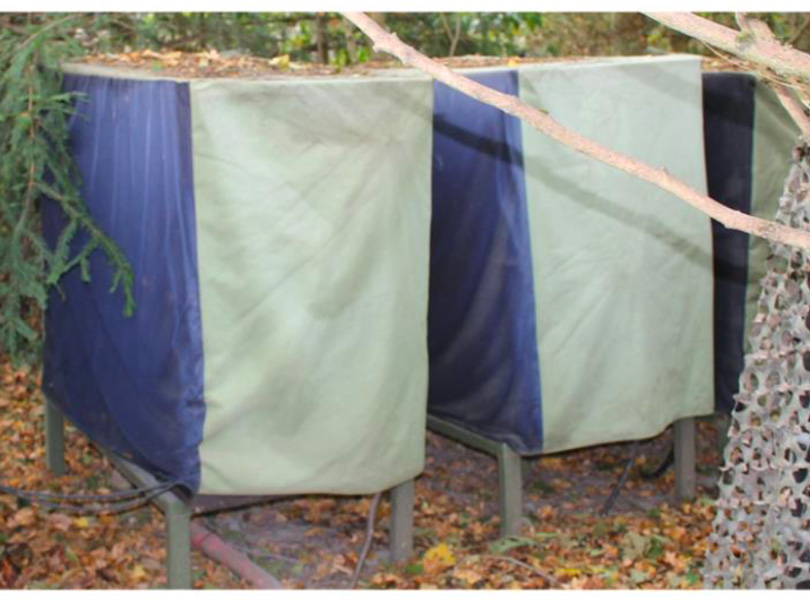
We make the system complete with Bose 802s which actually cover the Green Carpet which leads to the Apollo Basin and the Grand Canal. There is one on each side of this alley, every 10 meters or so.
From what I can remember, there are 58 of these running, all powered by PM4500 amps. We also made the choice to drive the audio distribution with Galileo or Callisto Meyer in each technical hut.

SLU : Bose is not a brand you’d expect to find in Dushow inventory.
Benoit Soutenet : When we took over this case 7 years ago, as the design has completely changed, we invested to meet the specifications in 802, MA12 and 360 columns which are very practical for occasional close range reinforcement, and amplifiers to feed them.
SLU : We will see other places of sound diffusion below, but sometimes lines and complements overlap. Was a calibration done?
Benoit Soutenet : Of course, by Hervé Herrero who is the designer of all the audio part. The goal is to maintain the sound as much as possible into the gardens without level emergences and to keep an overall low pressure with the best coverage.
The musical program is the same on the long way down to the Apollo Basin, but each grove has its own program playing. The Mirror for example plays its own music in two 4 V-DOSC stacks in the middle of which we find the same cardioid end fire assembly of 4 x 2 SB28. The goal is therefore to allow this musical variety without pollution.

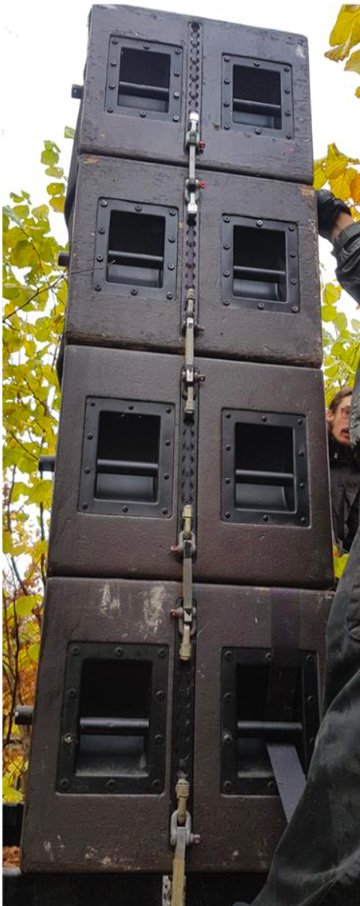
SLU : Don’t you swap programs, a bit like for the active places in festivals?
Benoit Soutenet : No, all of the fountains have stand-alone programs that start every 15 minutes and last ten minutes. The levels and the main choice of proximity or very directive speakers allow the vegetation to confine the sound to the targeted area.
SLU : You position L-Acoustics and Bose models as needed.
Benoit Soutenet : That’s it. For example at the Encelade grove we chose fairly long, and therefore directive columns from Bose, the MA12EX. In other places we will favor more full range and powerful products like the 802 or finally Freespace 360 which, as their name suggests, open 360° wide.

In L-Acoustics we have V-DOSC, dV-DOSC and Kara with SB18, dV-SUB and SB28 subwoofers. These are SB18 subs in cardioid set-up which extend the frequency response in the bass of the MA12EX columns of the Encelade.
SLU : Who made the choice of speakers?
Benoit Soutenet : Hervé Herrero who’s in charge of the Audio dept. at Château de Versailles Spectacles.
He was the one who asked us for Bose Freespace 360, for example, a kind of little green mushroom that we see in all theme parks.
There are plenty at the Bosquet des Trois Fontaines to make them play very softly and be as homogeneous as possible. When it is necessary to cover for example the water noise, we add 802s.
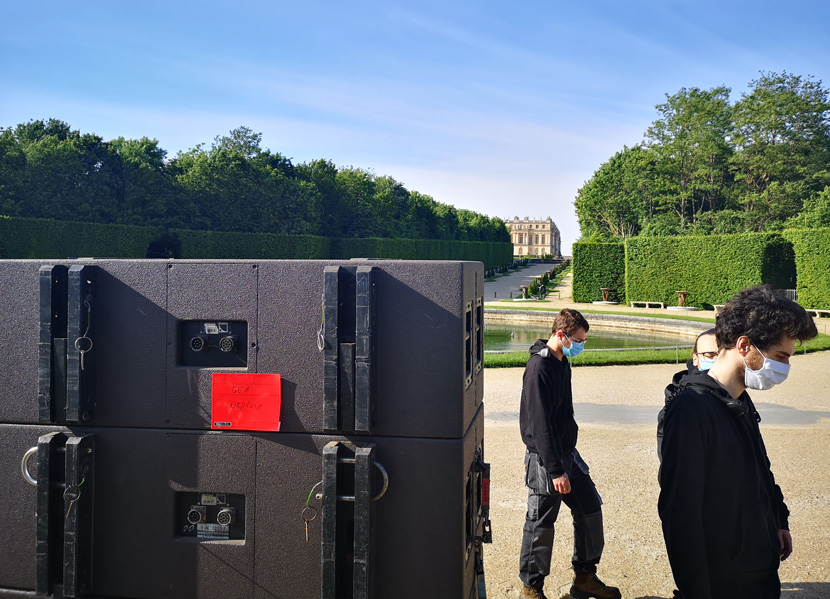
SLU : How do you protect the different speakers?
Benoit Soutenet : By specific waterproof covers in RAL 6003 color which is the official Versailles green. These covers remain on the stacks all the time and have a “transonor” acoustic transparent part with a water repellent fabric. It would have been impossible to cover and discover them according to schedules and weather conditions. The use of these covers effectively prevents active models that could not cool down.
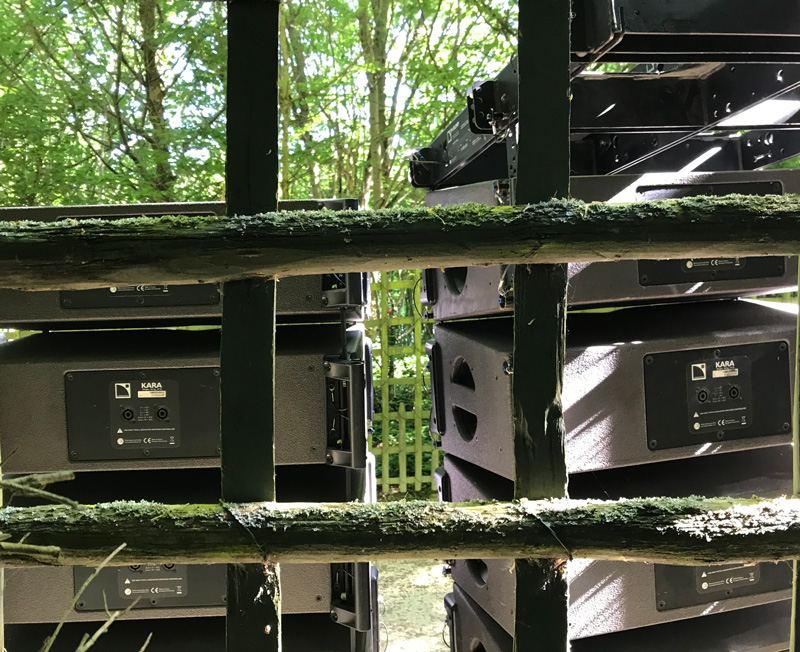
Protection is essential, the speakers stay outside for seven months and endure all kind of weather changes and tough conditions. The cleaning process is essential at the end of each season and requires ten days for the whole kit.
Amps especially carry a lot of dust internally and must be completely air-blown. Ants were also found in there…
SLU : Everything stays powered on all night long?
Benoit Soutenet : Absolutely yes. We never turn anything off to prevent moisture buildup. The cabins are in the thicket and in the morning there is a lot of dew.
SLU : The speakers you use here, especially the dV and V only come out on this operation?
Benoit Soutenet : Yes. This is a “Versailles Fountains Waters” kit that only does this very specific job and that we maintain especially for that. It suits the customer perfectly. It is however not impossible that over time we’ll renew this kit. We also have Kara which replaces dV which has been sold. This brought a real “plus” in the set-up.

SLU : Is humidity playing tricks on your speaker cones?
Benoit Soutenet : No, we had extremely little or almost no breakage. The systems are all tilted in positive angle so the water flows and does not reach the transducers. The amps suffer a little more from the heat, but year after year our extractors improve.
The advantage of fiber links is that you can network the LA8s and know how they are doing. The Bose amplifiers, on the other hand, being sometimes far from the Auvitrans, cannot be monitored, but since they only feed less strategic speakers and play very quietly, it is less penalizing.

SLU : Where do the signals come from?
Benoit Soutenet : From a central control room in a cabin located along the Tapis Vert to the left of the Dauphin Grove. It contains MacMinis which are the property of CVS and are the responsibility of Hervé Herrero.
They come equipped with Ableton Live and the configuration is redundant. Our task starts from the Apollo interfaces onward. They are connected to computers.
The total configuration is set in delay, EQ and level but it is possible to tweak it according to the weather or any special events that take place in addition to the Fountains. The level is also higher in the evening to play along the fireworks which are fired at the end of the Nocturnal Fountains Show.
SLU : Since when is the optical fiber installed?
Benoit Soutenet : Since we took control of this site. When we arrived 7 years ago, the connections were analog and for some of them very, very long which is never good for an audio signal. We upgraded the whole set-up with CVS. They installed the fiber because they also wanted to go for architectural lighting. Now we have boxes on which we can connect at strategic points. On break-out points, depending on the number of channels we need, we have an Auvitran AVBx7 or AVDT-BOB rack in each technical cabin.
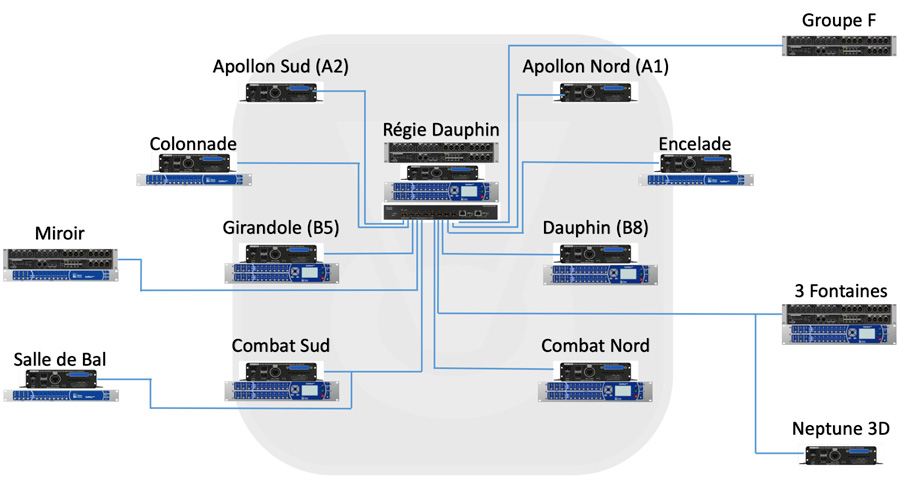
SLU : Is Hervé Herrero staying in the control booth?
Benoit Soutenet : No, Hervé does the initial design, sets up the gear with us and achieves the calibration. Daily operation is the work of François Baillergeant. He is on site 4 days a week and takes care of all the shows. Every morning he makes his check-up tour, spits out his test sounds, goes around and in case of problems he has two possibilities.
Either he can reset a circuit breaker or reprogram any possible cut-off alone, or, in the event of a real equipment failure, he contacts us and we take over what’s to be done or changed. It also has a number of spare amps on site.
The Chateau de Versailles has real know-how and personnel and as it is an installation that returns from one year to the next, everything has been done to have in all the right places mains and fiber feeds. It is not a temporary installation per se, even if it is dismantled and reinstalled every year.

SLU : The garden becomes musical with a certain amount of level every summer, so I assume that a few neighbors might show up…
Benoit Soutenet : It can happen but it is the responsibility of CVS which receives any comments and of Hervé Herrero who can adjust various settings according to these. There is very little intervention on these issues and everything is done to aim the speakers accordingly and control the levels at best.
Presentation video (gorgeous indeed…)
More information on the Chateau de Versailles website and on the Dushow website








